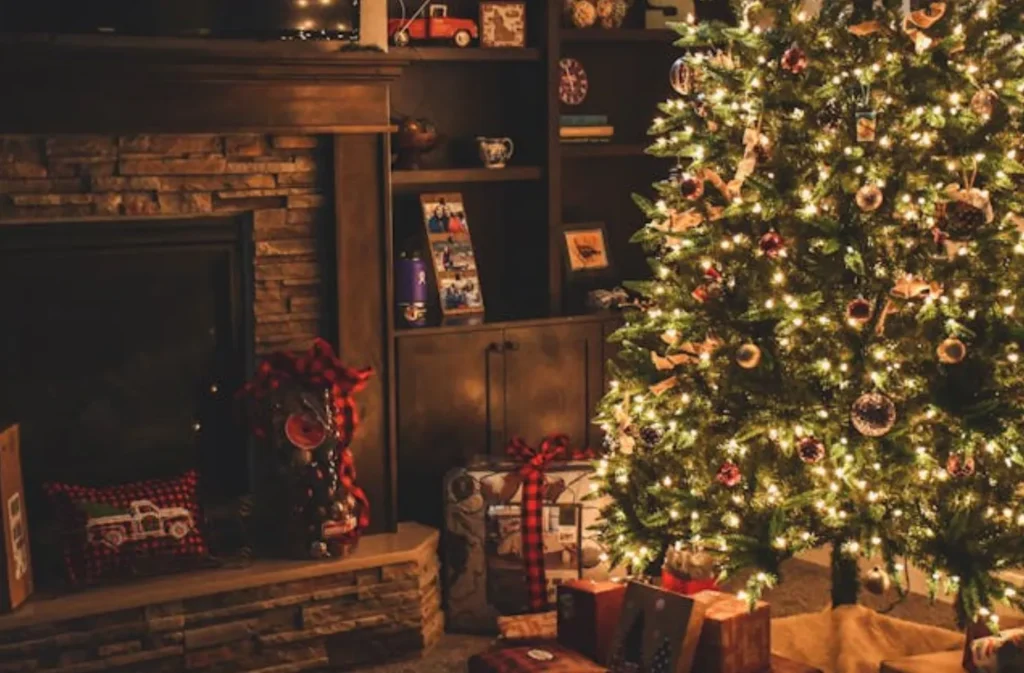Selecting a Christmas tree is an important step during the holiday season, it transforms a home into a festive space and a joyful occasion. This guide offers five straightforward tips to help with this crucial decision, considering factors that can ensure you find the perfect tree. Making this choice properly can truly enhance holiday celebrations.
Contents
1. Choosing the Right Type of Tree
When it comes to Christmas trees, you have two main options: a real tree or an artificial tree. Real trees give you that traditional feel and nice smell of the forest. On the other hand, artificial trees can be very helpful for our busy lives as it has a lot of useful benefits.
Artificial trees are very handy. You don’t have to water them every day, also the cleaning becomes very less since there will be no fallen needles! If you are someone who might have allergies, then these artificial options are better for you because they do not bring pollen or mold into your house. A lot of effort is made to design today’s artificial trees, for example, they look very similar to real ones, making these a good option for your house when it comes to both function and beauty. Once the holidays are done, you can easily take artificial trees apart, put them in a Christmas tree storage bag, and use them next year, which is a very simple and sustainable option.
2. Assessing the Tree’s Freshness
The freshness of a tree is absolutely vital, influencing how long it will remain vibrant throughout the holiday season. A freshly cut tree will have supple needles that are not too brittle; it should be pliable when touched and should possess a strong scent when smelled; the tree must never feel too dry.
Also, there should be a noticeable vibrancy in its green hue, indicating that the tree is healthy, and it is not drying up. To be certain, gently tapping the tree on the ground or shaking it lightly, an excess of falling needles points out that it might be old, not the ideal choice to buy at all. This helps avoid purchasing a tree that will quickly become a dry, messy nuisance instead of a joyful display. Looking through the tree’s base to ensure that it is light in color is beneficial, as well, as a dark color suggests the tree may not have been recently harvested. Therefore, it will dry faster.
3. Determining Tree Size and Shape
Before shopping for a tree, one must measure the area where the tree will be positioned in your house so that the tree is properly suited to the space. A tree that is too large can overwhelm a room and can make difficult movements through the house; conversely, if it is too small, it may not fit your plan or holiday vision and may look out of scale compared to furniture and items already placed in the room. It is best to select the tree based on its size and think about the ceiling height of the room; then leave ample space at the top for the star or decorative topper.
4. Considering Tree Care and Maintenance
When you find the right tree, immediately cut about two inches from the base of the trunk. This lets the tree soak water efficiently; make sure the stand of the tree is filled with water, and always check water levels to keep it filled, never allowing it to become dry. Always remember to keep trees away from heat sources; things like fireplaces or heating vents will dry out trees quickly, making it easy for needles to fall, which is not what everyone wants, and it can also be dangerous. Also, regular misting can help maintain moisture in the needles. Also, thinking about disposal after Christmas is beneficial; you must think about your community’s disposal and recycling, and there should be a plan in place.
5. Inspecting for Pests and Damage
A close inspection of the Christmas tree prior to bringing it home is necessary; any pest infestation or damage will bring additional and unneeded problems, which no one wants. To be certain, look closely at the trunk and branches, paying attention to eggs, bugs, or any other unneeded small insects, and other tiny creatures; any sign of damage, like large missing sections from branches, points that the tree may not be at its best condition. Often, small insects that live within a tree can move into the home once it is in your house, it will create chaos for a while. This can bring unneeded stress; therefore, be certain to inspect the tree from top to bottom, ensuring that the tree is healthy.
Conclusion
Following these simple yet crucial steps, picking the ideal Christmas tree can truly become an enjoyable and very rewarding part of the holiday traditions. The joy and festive feelings it brings is beyond compare. These guidelines are designed so one can make the most out of their Christmas celebrations.
